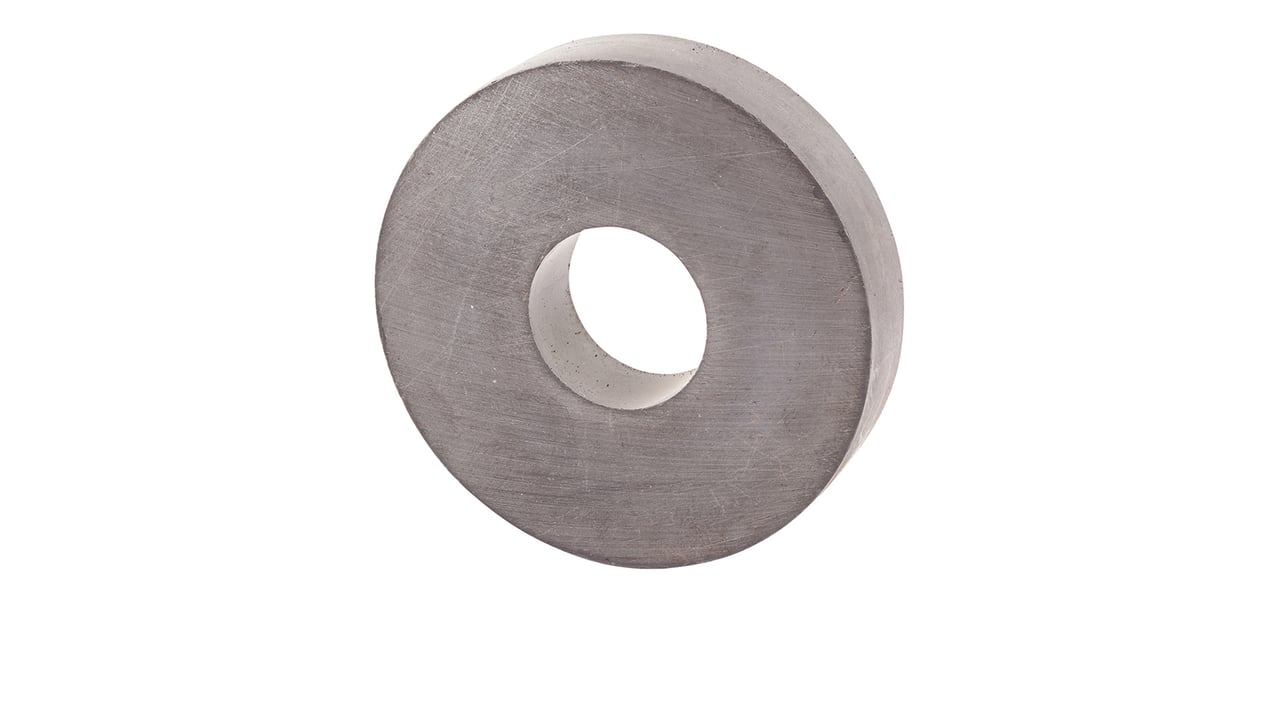Loudspeakers Materials 101: Speaker Magnet
Editor's note: originally posted in 2021, this blog now has more information on magnets, including cutting-edge magnetism technology.
In the heart of a loudspeaker sits a magnet. It’s a permanent magnet—meaning it has a fixed polarity—that interacts with the electromagnet created in the speaker’s voice coil. Magnets with opposite polarities attract. Magnets with the same polarities repel. The polarity of the voice coil alternates back and forth with the alternating current electricity feeding into it. The attraction and repulsion of the voice coil to the permanent magnet is what creates the motion of the loudspeaker and the sound waves that come out of it.
Magnet Materials
Selecting the right material for a speaker’s magnet and other internal components is a critical part of the design process for a loudspeaker. When it comes to magnets, the biggest things to consider are their strength, size, and cost. The three most common materials used for a speaker magnet are ferrite, neodymium, and alnico.
Ferrite
Most loudspeakers, especially larger ones, have magnets made from ferrite. This lower-cost material is derived from iron oxides. Ferrite magnets have relatively low magnetic properties so they have to be relatively large for loudspeaker applications. Ferrite magnets are cost-effective and resist corrosion, making them a good choice for outdoor audio systems. If size and weight are priorities, ferrite may not be the optimal material choice.
Resource: Engineering mini speakers better
Neodymium
Neodymium is a rare earth metal that is combined with iron and boron to create more efficient speaker magnets. It has a very strong magnetic field, and a neodymium magnet could be just as strong as a ten-times-larger ferrite magnet. However, because of the high demand and limited supply, the neodymium magnet can cost about ten times as much. The choice between neodymium and ferrite magnets often comes down to size, weight, and cost targets.
There are other considerations to keep in mind. Neodymium can rust, so it must be coated or covered to protect it. It’s brittle and susceptible to demagnetization when exposed to high temperatures, which can be an issue inside many speaker enclosures. Lower grades of neodymium material when exposed to temperatures above 176℉ (80℃) can become permanently demagnetized. Heat-treated grades (and much more expensive) can maintain magnetization at temperatures as high as 446℉ (230℃).
Sourcing rare earth metals like neodymium is not easy. That’s why MISCO is partnering with Minnesota-based Niron Magnetics to develop high-performance loudspeaker magnets that don’t rely on rare earth metals.
Alnico
Alnico magnets were the primary magnets used in speakers all the way up until the 1970s. They are much less popular today. Alnico is an alloy of aluminum, nickel, and cobalt. In the late 1970s, the price of cobalt went up 500% for a short time (before coming back down significantly). It remains scarce and the price of alnico magnets is rather high. This has nudged people toward alternative options. However, alnico magnets are sometimes preferred in guitar speakers because musicians like the warmer sound and natural compression as compared to a ferrite magnet.
So there you have it, the three basic magnet choices. To recap, ferrite is the cheapest and most commonly used magnet today. Keep in mind that it’s also the heaviest, which can impact a speaker’s performance and overall weight. Neodymium, a rare earth metal, is more expensive than its ferrite brother, but since less of it is needed, the speaker will be lighter. The third magnet material, alnico, has been used in loudspeakers for decades, but it is most often used in guitar speakers today. If you want to learn more about the components of a loudspeaker, download our LoudSpeaker 101 Guide below.
